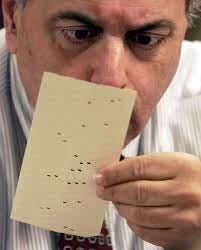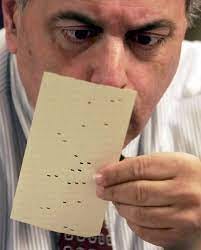How the Supreme Court Installed George W. Bush as United States President in 2000
The election came down to 537 votes in Florida.
Photo Credit: Encyclopedia Brittanica
Issue #196 American History, December 13, 2022
In the presidential election of 2000, Vice President Al Gore, a Democrat, was running against Texas Republican Governor George W. Bush. The term of President Bill Clinton, under whom Gore served as Vice President, was ending after two terms. Polls showed that the election was consistently close, with polled leads changing nine times during the fall campaign.
On Election Night, Gore was ahead in the popular vote tally by 543,895, but at that time, he had lost the Electoral College vote. This was the first time since Grover Cleveland in 1888 that a candidate won the popular vote but lost the Electoral College.
No intrusive ads or annoying popups ever! Instead, please see the important information below and at the bottom of this post. That’s how we grow and sustain this publication. AND, please keep those “Likes” and comments coming! Thanks!
All posts are free for fourteen days after their publication. To read all older posts, including the complete archive, please consider upgrading your subscription to a paid level. Thank you for your support!
This was also the most contentious election since the presidential campaign of 1876 when Republican anti-slavery candidate Rutherford B. Hayes lost the popular vote to the southern Democrat Samuel J. Tilden, and neither candidate secured a majority of the Electoral College votes.
The election was decided in the House of Representatives after the southern Democrats conceded the election based on a promise by Hayes to end federal support for Reconstruction and removed the military from the former Confederate States. Called the “Compromise of 1877,” a Congressional Commission finally awarded 20 contested electoral votes to Rutherford.
The 1876 election debacle led to the passage of the Electoral Count Act of 1887, which sought to clarify the Constitutional procedures for the counting of electoral votes following a presidential election.
Bush v Gore Part 1
The major networks initially called the election for Gore at about 8:00 pm EST, based solely on exit polls. However, by about 10:00 pm ET, the actual vote counts in Florida gave Bush a sizable lead, and the networks retracted their predictions and decided Florida was “undecided.”
At 2:30 am ET the next morning, the networks called the election for George Bush, and Al Gore conceded.
However, by 4:30 am ET, as votes in heavily-democratic counties of Florida were counted, Gore gained the lead and withdrew his concession. Bush's lead had dwindled to just over 300 votes.
But remember, this was Florida.
Republicans controlled the election in Florida in 2000
The governor of Florida in 2000 was Jeb Bush, the younger brother of George W. Bush. The Republican Florida Secretary of State, who oversaw the election proceedings while also serving as co-chair of George W. Bush's election efforts in Florida.
Harris previously purged 173,000 people from the rolls, including a disproportionate number of Black people who usually voted Democratic.
Because of the closeness of the Florida results, a mandatory recount was instituted, and several recounts were subsequently completed with inconclusive results.
Harris halted the recounting process while Bush was ahead, and then certified the Republican slate of electors, awarding Florida’s 25 Electoral College votes to Bush, based on his narrow lead in the Florida popular vote. This gave him a narrow Electoral College majority and he was declared the winner of the presidential election.
The Republican slate of electors had already been certified on December 8, although the final outcome decision was not declared by the U.S. Supreme Court until December 12.
Al Gore sued to get a hand count of the votes in just a few of the Florida counties instead of the entire state. At one time, there were more than forty election-related lawsuits before the Florida Secretary of State.
The main problem with counting the votes by hand in Florida was the use of punch cards for ballots. If the hole next to a candidate’s name was not fully punched, it was called a “hanging chad,” meaning that one, two, or three corners of the punch, the “chad,” were still “hanging on” the ballot. It was difficult for those ballots to be read by the vote-counting machine.
Some of the names on the ballot were hard to match with their actual hole to be punched, and it was reported that some votes meant for Gore were punched for 3rd-party candidate Pat Buchanan.
Because there was no standard for hand-counting those ballots with hanging chads, there were several lawsuits, challenges, and recounts, including the Florida Supreme Court ordering a recount of undervotes in all of Florida’s 67 counties. But George Bush appealed, and the case went to the Supreme Court of the United States (SCOTUS).
Bush v Gore, Part 2
While we are presently dealing with Supreme Court decisions by the conservative majority that appear to be politically motivated, remember that the 2000 election was also effectively decided by two decisions by SCOTUS.
Bush initially claimed that his Equal Protection Rights were violated because there was no standard for the recounting of the punch card ballots, and the SCOTUS, in a 7-2, decision agreed.
The second part of the decision, in a 5-4 vote along ideological lines, including the deciding vote by Associate Justice Sandra Day O’Conner, said that a solution could not be put in place by the December 12 safe-harbor deadline. The Florida Supreme Court said that the Florida state legislature wanted Florida’s electors to honor the December 12 deadline, but the SCOTUS went against the decision of the Florida Supreme Court and sent the case back to Florida.
The election put the Florida election system under a microscope, examining election machines, voter lists, vote-counting rules, the state’s poorly drafted election statutes, partisan election officials, and the role of courts.
But it was too late. It was December 12, and there was no more time left in the safe harbor deadline, so George W. Bush remained the certified winner in Florida, and Al Gore conceded the next day. His only option was to attempt to have the House of Representatives decide the election, but Gore decided to end the election and concede on December 13, 2000.
On January 6, 2001, Vice President Al Gore, in his position as President of the Senate, oversaw the official counting of the Electoral College votes that he lost, even after winning the national popular vote.
Bush led in the Electoral College vote by one of the narrowest majorities in American history: 271-266. Two hundred seventy (270) Electoral College votes are needed to win.
In 2013, Sandra Day O’Conner, who had recently retired, said she regrets her vote and the SCOTUS decision.
Paid Subscribers! Join us in our Chat Room to participate in the W.A.S. discussions!
There are many benefits to using the W.A.S. app, including the ability to listen to our posts and podcast episodes straight from the app.
You can always leave any questions in the comments, or you can email us.
I will be leaving Twitter very soon, so I am concentrating much more on my Instagram account. Please click the link to follow me on my ‘Gram.
Subscribe or adjust your subscription to receive the “Find Out In Fifteen” Branding and Marketing Podcast for the Global Creative Community
Please support us: subscribe for free or upgrade your current subscription to a paid level for only 31¢ per issue or less. We publish 32 issues per month.
Paid subscribers receive all of the weekly posts and podcast episodes, and can participate in the Chat and monthly Zoom Community Session.
You can also subscribe or adjust your subscription to only receive notifications of the W.A.S. Weekly Summary Newsletter (instead of daily emails):





